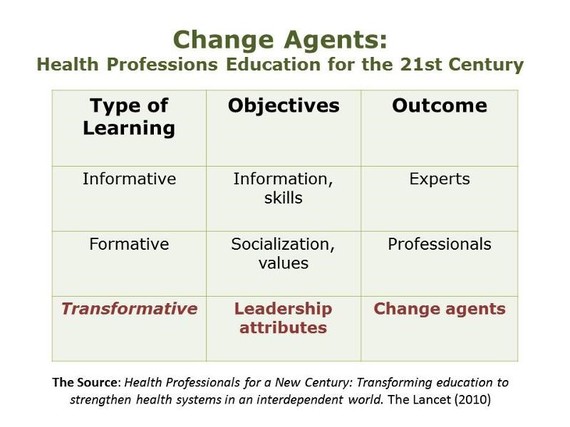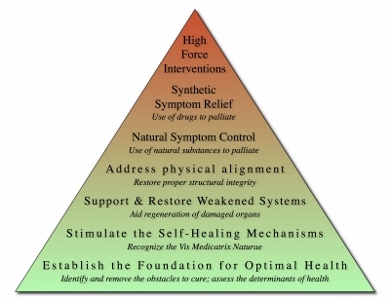John weeks PhD wrote an interesting article on how Functional Medicine was developed in his Integrator blog and in the January 5, 2016 Huffington Post article in which I wanted to share.
Chronicles of Health Creation: The Naturopathic Profession's Impact on Integrative and Functional Medicine
I was
called by a consultant to an institute associated with the American Association
of Naturopathic Physicians to participate as an outside expert in a strategic
process.
I spent
the 1983-1993 years working in an intense period of the profession's
re-emergence. I have since closely observed its multiple contributions to the
subsequent rise of the functional medicine and integrative medicine movements.
The profession has focused on setting and earning recognition of
standards for the naturopathic brand of integrative medicine. Despite opposition from the
American Medical Association and its affiliates, since 1978 the
profession has re-bounded from just a few hundred practitioners, licensing in 6
just states, and a single college. Now, while still a vanguard, the profession
boasts 8 federally-recognized colleges, roughly 5,000 practitioners and legal
practice rights in 20 U.S. jurisdictions.
The consultant's question: How should the Institute set its course to best advance the
profession in the next phase?
My answer grew from dual awareness of the field's small size and
its extraordinary influence on the evolution of the "new medicine."
My answer came quickly. I urged that the profession focus on its
broad, health-fomenting mission rather than to cling to its narrow guild
interests as a profession. Mightn't the naturopathic guild,
paradoxically, benefit from a very non-guild-like, energetic strategy?
First,
evidence of the contributions.
1. NDs are Core Educators at the Institute
of Functional Medicine
The functional form of integrative medicine, embraced at the Cleveland Clinic, has had naturopathic
physicians at its center since its beginning. Naturopathic physicians are the
organization's co-directors of medical education. Sheila Quinn, ND (Hon), the
editor of the Textbook of Functional Medicine, earned her integrative
chops as a co-founder of a naturopathic college, now Bastyr University, and as
executive director of the naturopathic professional organization. Bastyr's
founding president Joseph Pizzorno, ND - essentially a co-founder of the
Institute -- has served as the Institute's chair and remains on the executive
team.
Author
Mark Hyman, MD, the functional medicine organization's current chair, states
frankly: "The origins of functional medicine stretch back into the history
of naturopathic medicine -- on the idea that health is not the absence of disease,
but the creation of vitality and abundant health. Many of the principles of
naturopathic medicine -- the body as self-organizing, self-healing dynamic
system, the concepts of detoxification, and digestive health, and food as
medicine are all now embedded within Functional Medicine."
2. Academy of Integrative Health and Medicine:
NDs as Director of Education and Associate Fellowship Director
When two
MD-based holistic and integrative organizations merged in 2013 to form an
interprofessional "big tent" organization, the Academy of Integrative
Health and Medicine, the founders selected naturopathic physicians to serve as
the first directors of education and of certification, Tabatha Parker, ND, and
Seroya Crouch, ND, respectively. Parker led the organization's robust 2015
conference and Crouch is teaming with Tieraona Low Dog, MD as associate
director of the organization's pioneering interprofessional fellowship in integrative medicine.
3. Society of Integrative Oncology: NDs as
President and Immediate Past President
The guiding organization for opening oncology to integrative
practices is the Society for Integrative Oncology. It's immediate past
president is University of Michigan family medicine associate professor Suzanna
Zick, ND, MPH. Her predecessor, Columbia assistant professor Heather Greenlee,
ND, PhD, guided the Society to its crowning achievement: Clinical Practice Guidelines for integrative treatment of breast cancer.
4. Naturopathic Leadership in Whole System
Research, Integrative PCMHs, Policy and Academic Consortia
Naturopathic contributions to the new medicine does not end
here. Naturopathic researchers are pioneering whole practice research strategies.
Naturopathic clinical leaders are leading the demonstration of integrative patient-centered medical homes. Leaders in
the profession's re-emergence were core contributors in forming the most
significant interprofessional collaborations for the field: the Integrative
Health Policy Consortium and the Academic Consortium for Complementary and
Alternative Health Care.
Even with the profession's recent growth, the fact remains that
the sheer lack of numbers means that the vast majority of people will never in any foreseeable
future receive care from naturopathic doctors.
So, what,
in this context, is the best answer strategic direction for the maximum
contribution from the naturopathic profession?
4. Naturopathic Leadership in Whole System
Research, Integrative PCMHs, Policy and Academic Consortia
Naturopathic contributions to the new medicine does not end
here. Naturopathic researchers are pioneering whole practice research strategies.
Naturopathic clinical leaders are leading the demonstration of integrative patient-centered medical homes. Leaders in
the profession's re-emergence were core contributors in forming the most
significant interprofessional collaborations for the field: the Integrative
Health Policy Consortium and the Academic Consortium for Complementary and
Alternative Health Care.
Even with the profession's recent growth, the fact remains that
the sheer lack of numbers means that the vast majority of people will never in any foreseeable
future receive care from naturopathic doctors.
So, what,
in this context, is the best answer strategic direction for the maximum
contribution from the naturopathic profession?
My answer: Magnify the potential of the profession to influence other professionals. Let go of concern for
credit. Don't focus on requiring anyone to become a
naturopathic physician.
Instead, promote adoption of naturopathic
principles far and
wide in clinical care of other health professionals. Apply the docere principle -- to teach -- to exporting
the naturopathic therapeutic order (pictured above) into the clinical
methods of other professions. Expand on what the profession is already doing in
integrative and functional medicine. Teach people in other professional domains
to problem solve with naturopathic principles.
2
In 2010 The Lancet Report on
Education of Health Professionals for the 21st Century urged radical
shifts that are deeply consonant with naturopathic principles. Among these:
attention to the determinants of health, focus on primary care, behavioral
change, community health, and public health. The report urges that health
professionals be educated as leaders who are, above all, "change
agents."
Present
evidence suggests that the naturopathic profession is proving itself a change
agent of the first order. The values and philosophy, birthed of the standards,
are now infused into practices of thousands who may have little awareness of
these origins. That's mission work.
Following this line, the question for the naturopathic
profession and for anyone who seeks to advance health-focused clinical models
is clearly something like this: What are the initiatives and social investment that can multiply
the profession's change agency work while also attracting allies that will
advance the profession's guild requirements?
For many
naturopathic doctors, burdened by MD-levels of student loan debt and a still
wildly inequitable payment and inclusion practices, to strategically focus on
anything other than a narrow guild strategy may seem utter lunacy.
I don't think so. Just the opposite. Go with the energy. Go with
the mission. You? Got any ideas?
by John Weeks PHD














